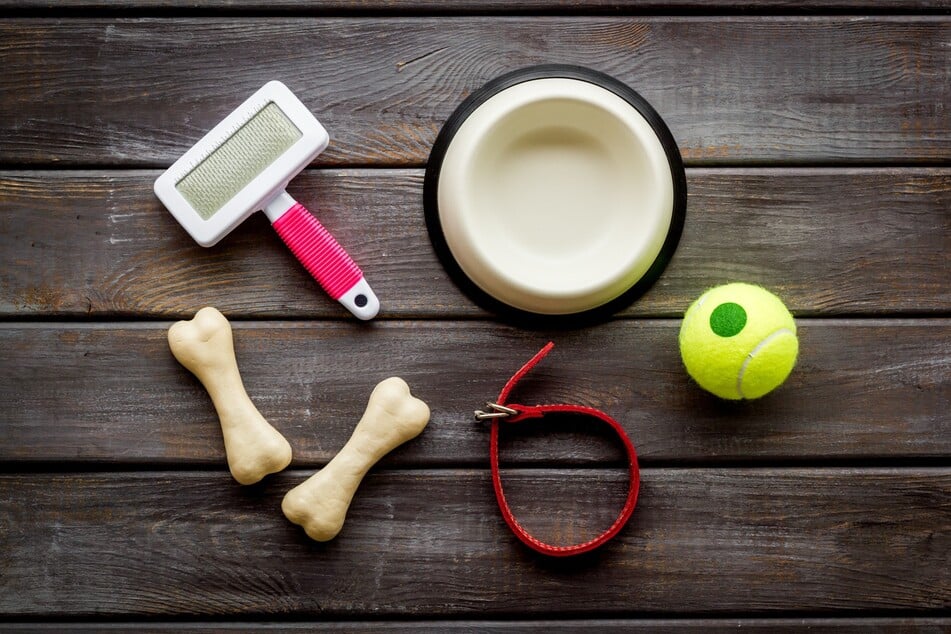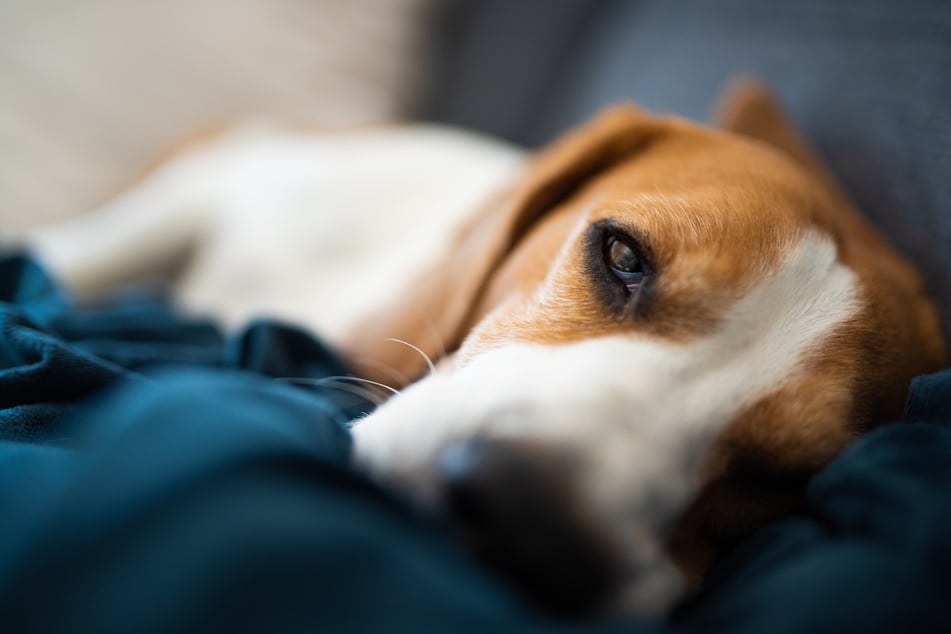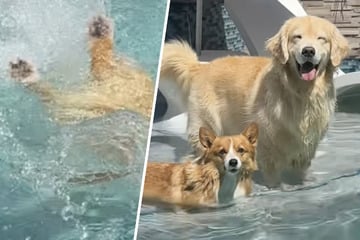10 tips for a stress-free move with a dog
Moving to a new home is an exciting yet stressful endeavor. Charged emotions also leave their mark on pets. To ensure that a move with a dog is as relaxed as possible, you need to take its needs into account before, during, and after the move.
- What do I need to consider when moving with a dog?
- Thanks to good planning, dogs will be less stressed during a move
- Before the move
- During the move
- After the move
- What equipment is important for moving dogs?
- How do dogs feel about moving?
- Conclusion: A move with a dog should be well thought out and planned
What do I need to consider when moving with a dog?

If you're moving with your dog, it's important to make the best possible preparations – not only to ensure that everything is (almost) perfectly organized and runs smoothly, but also to make sure that your furry friend is completely comfortable.
After all, dogs don't understand packing, disposing, or planning, but they still experience all the emotions associated with moving stress.
Despite the hectic pace, it is important to give your dog attention and love so that the stress of the move does not traumatize it.
Both the preparations for a move and the move itself mean many weeks of stress for dogs. The settling-in period in the new home should also be lovingly planned so that the furry friend can finally settle down again.
Read on to find out how to plan a move with a dog, what to consider before, during, and after the move, and how important a dog bed, toys, etc. are.
Thanks to good planning, dogs will be less stressed during a move
Boxes are packed, furniture is dismantled, and things are sorted out – the dog is everywhere and in the middle of it all. What can be exciting and fun for the four-legged friends for a short time is pure stress for a period of several weeks.
There are a few things dog owners should bear in mind so that moving with a dog can be well structured.

Before the move
Dogs love to be involved in sorting out and packing boxes, because these activities are new and exciting for pups.
Let dogs sniff everything
To give dogs the feeling that they are part of the whole thing and not excluded from anything, you should allow them to sniff and observe curiously. This also helps them to understand that there is nothing bad associated with the chaos of moving.
Protect dogs from injury
Nevertheless, you must always make sure that your furry darling doesn't injure itself on tools lying around or shred important packaging material.
Plan enough cuddles
Regular cuddling times with your dog are also still important. In the evenings, in front of the TV, you should give your dog a relaxing break and give it some closeness. This way, it feels that it is loved and cared for despite the daily hustle and bustle.
You will also benefit from this yourself, as cuddling with dogs helps people to relax mentally.
During the move
Keep your dog with friends
Because dogs can quickly become stressed by moving, they should be left with loving friends, acquaintances, or relatives on the day of the move. This way, they can spend a relaxed day away from home and won't get in the way of moving helpers, run through open doors, or react anxiously to the hustle and bustle of the move.
Familiar person devotes attention to the dog
If it is not possible to accommodate the dog, there should be someone familiar to the dog on the day of the move who will look after it exclusively. Playing, petting, relaxing: the main thing is that the dog is cared for and safe.
A comfortable move to a new home
Once all the boxes, furniture, and plants have been loaded, the dog must also be transported safely to its new home. The best way to do this is in a car in which it is carefully strapped in and has enough space. Ideally, it should be in a car that it is familiar with – after all, a lot of new things have to be endured on this day.
If it is usually transported in a dog carrier, this should also be the case this time. Routines help the dog to survive the move with as little stress as possible.
After the move
Let them explore, create a retreat
Once the material possessions have arrived in the new home, the dog should also be allowed to explore the new four walls. As long as its humans are on site, the dog will be reassured. Nevertheless, you should immediately set up a retreat for it and allow it to sniff and observe. After all, this is also its new home, and your furry friend needs to settle into it first.
Don't leave your dog alone for the time being
For this reason alone, it is important not to leave him alone at home straight away – even if he is used to it. It takes around four to six weeks for dogs to adapt to their new environment as their home, and only then should they be left alone again.
Quickly unpack dog toys and beds
As dogs have their own household items, consisting of beds, toys, chewing bones, cushions, and grooming materials, these should be unpacked quickly and placed in a quiet place.
Effective housewarming aid: Both the dog bed and dog toys should not be washed at first, so that they smell familiar after the move. This can help dogs get used to their new surroundings better and faster, as they associate their own smell with the new residence.
What equipment is important for moving dogs?
Most dog owners probably need a large crate to pack their pet's household items. It is important that the dog's equipment is always at hand, be it the soothing dog bone, the distracting toy, or the relaxing dog bed.
Especially for dogs that need regular medication, it is all the more important that everything is available at all times.
Regardless of whether a dog is being looked after on the day of the move, its belongings should be close at hand. With familiar things around it, it can relax much more quickly or be effectively distracted from the moving process.
The following dog accessories can be helpful here:
- Dog bed or basket
- Blankets and pillows
- Familiar food bowl
- Food for more than one day
- Grooming utensils
- Toys
- Medication
- Vet contact (for dog sitters)
- Old and new address (for dog sitters)

How do dogs feel about moving?

Moving with a dog is a drastic change of surroundings for the four-legged friend.
Although their pack is more important to dogs than their place of residence, a move does not leave them unscathed.
Hustle and bustle before the move, hectic during the move, and unfamiliar territory after the move: dogs, just like their humans, need time to adjust.
If you give your furry friend a place to retreat to as soon as they arrive in their new home, they know that they belong here and have a fixed place.
This helps them to get used to their new living environment.
You can often observe that dogs are very excited after a move, hardly relax, and watch everything with suspicious eyes.
It is important that they are allowed to do this. At some point, they will lie down and rest. Dogs can also sleep more in the days following the move in order to adequately reduce their stress.
Dogs generally cope very well with a move and quickly settle into their new home, provided they are still part of the pack. Make sure they get back to their familiar routine and receive their usual love and attention.
Conclusion: A move with a dog should be well thought out and planned
A dog is a valuable family member who should also feel at home in the new home. For this to succeed, a move with a dog should be solidly planned and implemented in a species-appropriate manner.
Sufficient relaxation time before the move is therefore just as important as keeping stress at bay on the day of the move, as well as plenty of patience and care after moving into the new home.
Dogs perceive moving differently from humans and should therefore not only be given their own place to retreat to, but should also be integrated into the family acclimatization process.
Cover photo: 123RF/Viorelkurnosov

